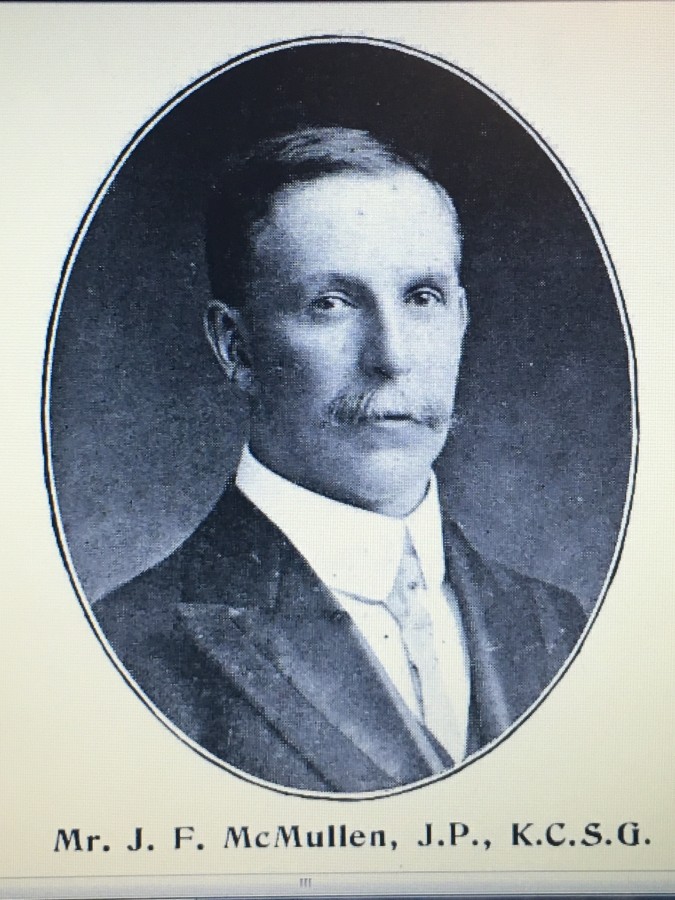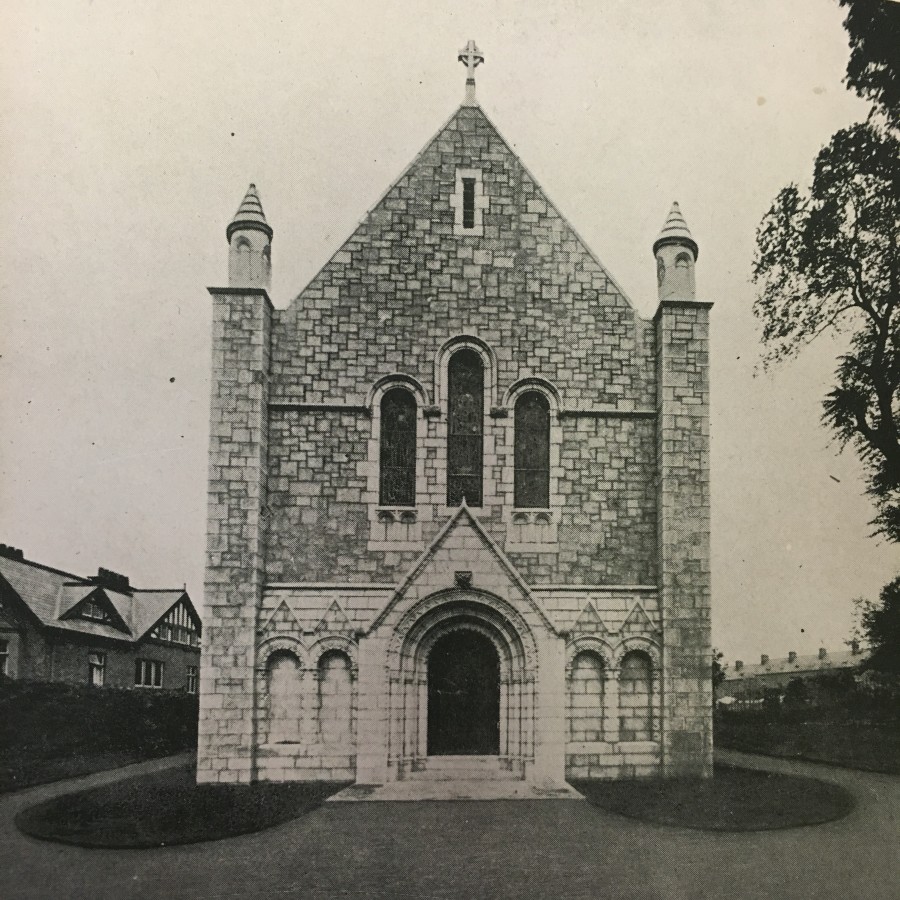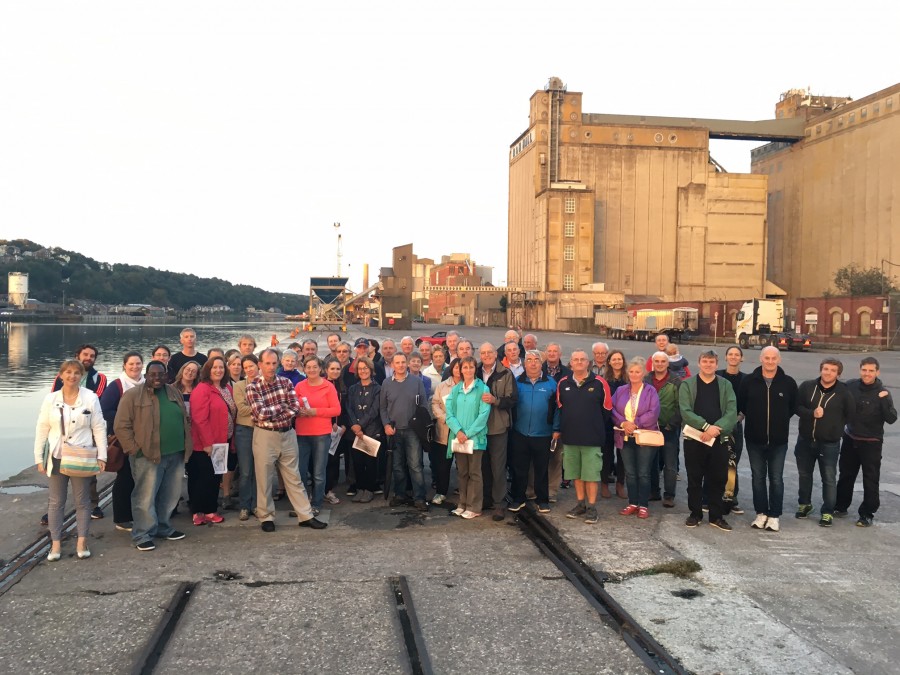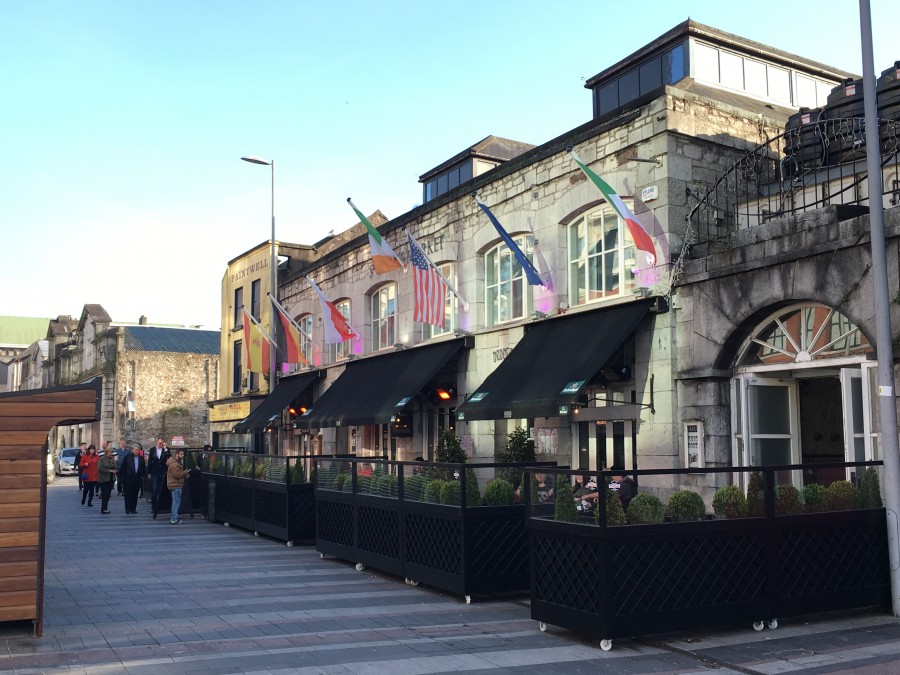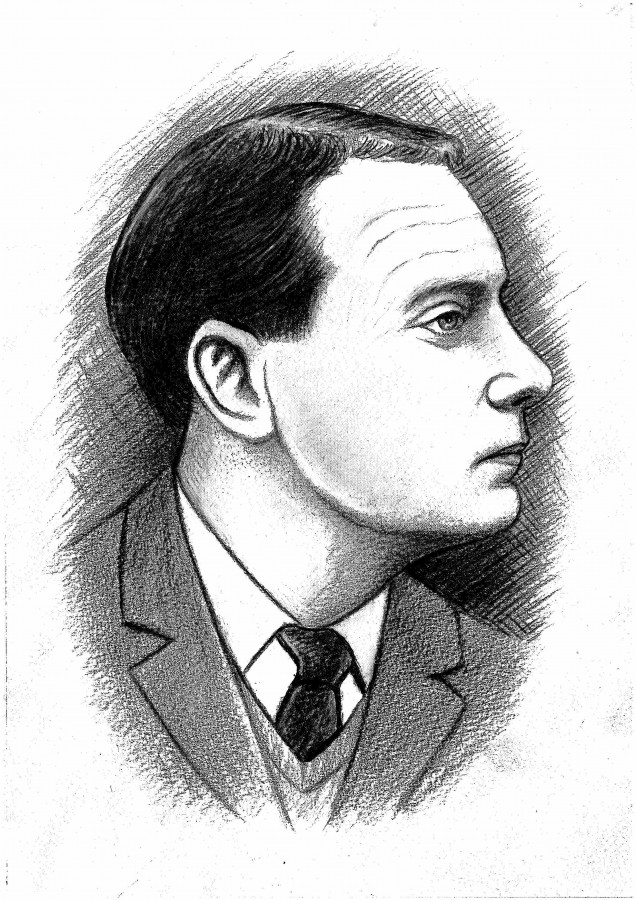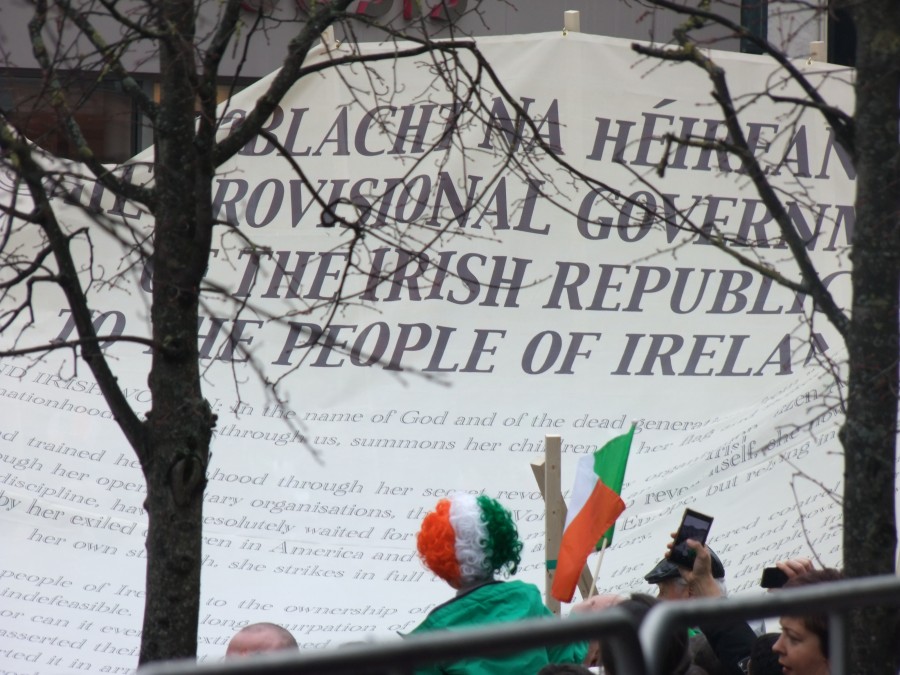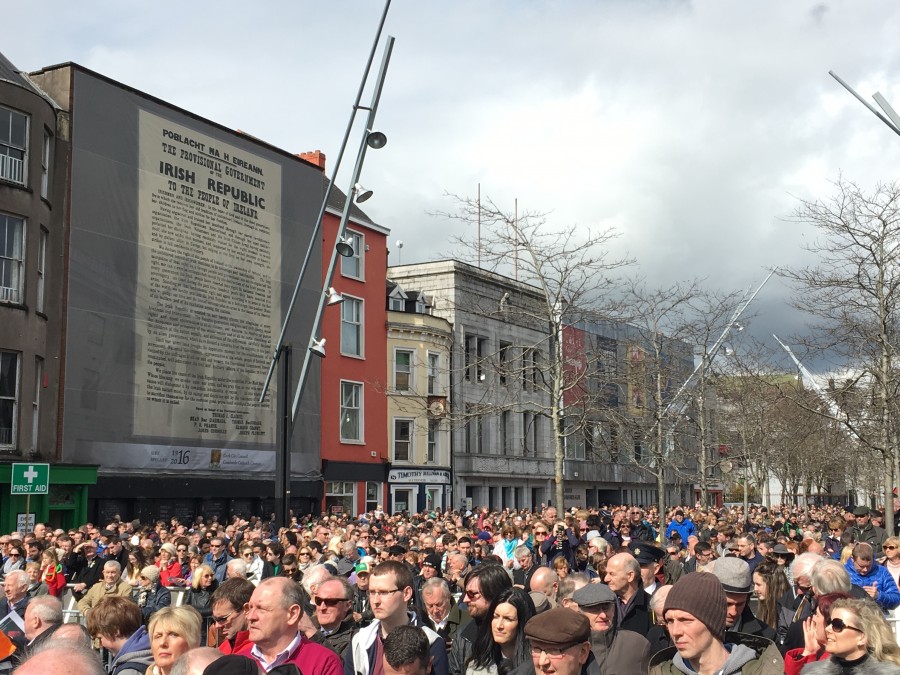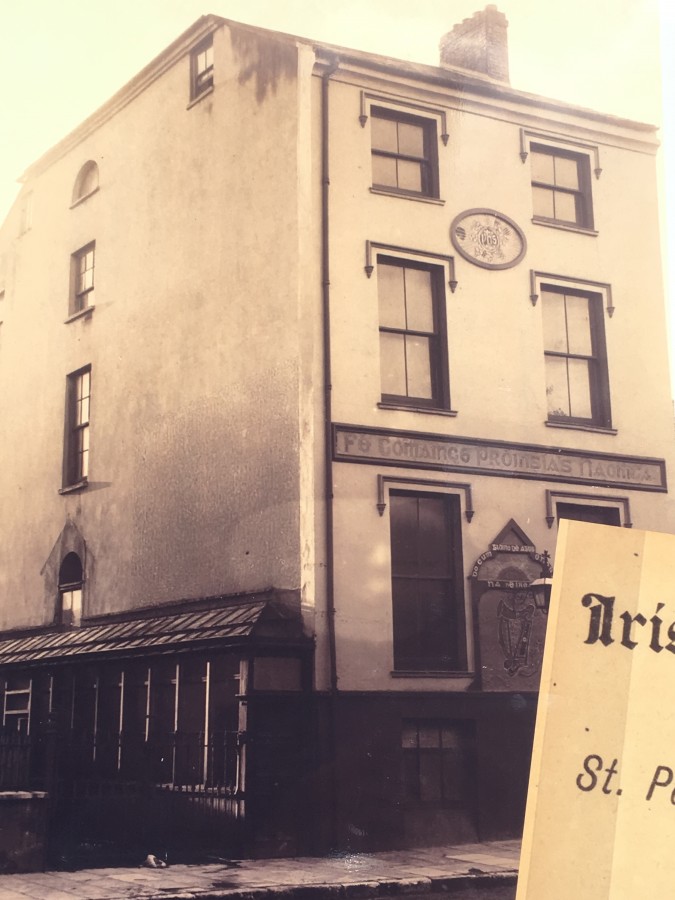Category Archives: National
McCarthy: Rebrand Cork City as Ireland’s Southern Capital
Press Release
Independent Cllr Kieran McCarthy has called for Cork City to rebrand itself as Ireland’s Southern Capital and lose such words as Ireland’s Second City- noting such terms as outdated and downgrading the city’s ambition. In this week’s debate with the City-County Expansion/ Merger advisory group under Jim MacKinnon, Cllr McCarthy cited his experience as a member of the EU Committee of the Regions to note that second tier cities within the EU, more than ever, are making their mark in the macro picture. He noted that Cork City should not be relegated to just a municipal district but should be scaled up to be an Atlantic Maritime City of Innovation. Commenting Cllr McCarthy; “This city has an obsession with looking towards Dublin but misses the opportunity to reconnect with cities in the Atlantic Maritime Region, where historically it traded with and had vast partnerships with. Cork punches way above its weight and is known by many European Commission officials who have visited Cork and the region on business and in a personal capacity as a holiday visitor. Small cities across Europe are tweaking, rebranding and repositioning themselves strategically in a very competitive European and global market of commerce. One gets to see that it is not a time for second tier cities to stay still or be diluted but an exciting time to explore their assets and to scale-up. There is a need to create a stronger narrative for Cork City and to scale up and reposition and capture its energy and expertise – not only as a strategic gateway in the south of Ireland but also in north west Europe”.
Continuing Cllr McCarthy commented; “Cities, large and small, in the European Union are now more than ever before, the powerhouses of economic growth, innovation and employment opportunities. Cities are facing ever greater social challenges in respect of the environment, transport and social cohesion. The Urban Agenda for the EU aims to address those challenges”.
“Vast sums of European structural funds are now being invested in cities and the public interest– to address poverty, housing, innovation, waste management, climate change measures; urban mobility. Much of Cork City’s key infrastructure, the last twenty years, has been for a large part funded by the EU – our new streetscapes, waste management, transport mobility, mechanisms and our larger public parks and amenities. We secure funds because we are an ambitious and strategic city with a vision for its future within a bigger picture – however whilst saying this we cannot secure large scale funding to provide ambitious housing and transport networks without enlarging the city’s boundaries and population. We cannot become part of eminent European urban projects such as Eurocities without have a population capacity of c.250,000”.
Cllr McCarthy stressed that in the macro picture, bigger cities are seen as stronger mechanisms that have population capacity, which can create better funding models: cross-sectoral financial instruments; they can simplify use of funds, and combine funds to more possibilities– the larger the city the more funding its attracts. “The potential for the future of Cork city is enormous. It has the potential to be a really important player in the development of this country but also a trusted player in the Atlantic Region of the European Union. Such ambition should not be thrown onto the fire of efficiency but should be allowed grow with the proper and most effective framework in place”.
President of EU Committee of the Regions Comes to Cork, EU Citizen’s Debate
Independent Cork City Councillor Kieran McCarthy welcomes the President of the EU Committee of the Regions, Mr Markku Markula, to Cork this Saturday 19 November to showcase the innovation hubs of Cork city and region and to host him at a Cork City debate on the role of small cities and towns within the EU. Mr Markula also accepted the invite of Cllr McCarthy and Cork Innovates to speak at the Global Start Up Nations event taking place at Cork County Hall this weekend.
In a recent debate on the future of the EU in the EU Committee of the Regions Mr Markula’s noted of the importance of listening to EU citizens: “citizens should have an inclusive, smarter, and safer Europe. We should channel politically our citizens’ critical assessment on the EU and its added value on the ground, but also their ideas for its better functioning and delivering. One way we could listen more to our communities’ concerns about Europe, for instance is through citizens’ dialogues or town hall debates”. Cllr McCarthy on hearing his call for action has invited Mr Markula and his team to Cork to such a city debate to listen to the concerns of a small EU city and region. Cllr McCarthy, a member of the EU Committee of the Regions, noted: “Cork is pursuing much work in the realms of start-ups and innovation and wishes to scale up within the EU. I have concerns that small cities such as Cork – small cities are plentiful within the EU – could be forgotten about in future cohesion policy debates. Cities and regions such as Cork have huge heart, passion, and energy to contribute positively to the bigger EU tapestry of policy making especially in evolving business, enterprise, employment and social policy models. Mr Markula will debate with Mr Dara Murphy TD, Minister for European Affairs at 2pm (duration: 1 hour), Saturday 19 November at the Gateway Building, UCC. The event is free but for registration, please email sarah.holden@iro.ie.
Kieran’s Budget Night Meeting, Cork City Council, 16 November 2016
Thanks Lord Mayor.
I would like to thank the CE and John Hallihan for their work on this draft document and the Chair of the Finance Functional Committee, Sean Martin for agreeing to long discursive evenings around savings, cuts and compromises.
One would like to think we we’re at the bottom of barrel of large scale cuts –I feel we are – however this base is very different to previous years where there were easier choices of cuts – now the landscape at the base is scraping the barrel looking for anything else we can use to balance our books.
It is quite clear that local Government not taken seriously enough by central government– the daily local government email updates offer an interesting lens at the moment to see other Councils across the country desperately trying to make ends meet on budget night.
The Putting People First project has equalled cutting people first.
It is becoming more and more clear LPT for cities such as Cork are not enough to fund Councils and their work – even if you put it up by 15 per cent. It’s not enough.
Our revenue reserves are scarily exhausted, our patience is exhausted and we are physically and mentally exhausted and frustrated.
For next year we can add another piece of Roads to the central government agenda– the maintenance programme as being dictated upon – piece by piece, the discretion decisions of cllrs has been eroded.
Is anyone fighting the case for local government in Dail Eireann? nope not really
And one could go on and on with reality and negativity and one could be right.
Positivity:
I am reminded as well we also need to be positive on what services we do provide.
On the positive side though reading the draft budget book, the dearth of services we provide to communities in Cork is vast.
Continued emphasis on the turn around of vacant social housing units and their return to stock is very welcome. We continue to collaborate with agencies to resolve our homelessness problems.
We continue to provide support to those aspects of building community capacity through community grants – we collaborate with agencies on community policing plans, public participation networks, Age friendly programmes, the local economic and community development plan – it is a council for all.
We do festivals well – we have seen the recent buzz this year around 1916 events, Jazz festival, and the switch-on of the Christmas lights.
We have struck very good partnerships in creating local enterprise partnerships, arts and heritage programmes, promoting science and technology; we are fully engaged in Lifelong Learning, encouraging formal and informal education. We invest 1m euros in visitors centre, events and community and arts grants.
And indeed one could say all we do well of what I have listed doesn’t really stay on the agenda as regular points – they only all appear together in draft budget books like this evening – it’s kinda like everything we do is diluted down to just housing and roads – and that is something we need to avoid – the Council is more than just two directorates.
From looking at some of the conclusions in the draft book – there are number of points sticking out – need for continued collaboration need with CBA and Cork Chamber going forward – the need to market even more business and enterprise in the city – would love to see the South Mall as a start-up incubation street. We need to promote parking in the city more – and build an alternative marketing plan to the shopping centres.
We need to build upon our tourism offering and festivals – scale two or three of them up to international standards – 30 odd festivals, which celebrate the city’s urbanity and cultural thinking
Tonight has also historical resonances or a sense of Déjà vu as well – this week one hundred years ago – city cllrs spoke at length about poverty in their Council meeting about poverty in the city and declining industry – but Trafford Engineering Co of Manchester – came to discuss their proposals for a tractor factory in what is our North Docklands and a worker’s village upon the city park racecourse to employ 2,000 adult males with a wage bill of £200,000. The cllrs of course heralded this proposal and led to its tweaking – the factory to be upon the Marina – worker’s housing never came to pass.
Cllrs heaped praise on the project – the value of it to communities, local economic development, business communities, social policy, enterprise, poverty reduction – but they couldn’t have foreseen the vast opportunities and scalability within all those concepts, all of which Fords wove together to re-imagine an ancient port city.
Fast forward to today I do think the value element and the interweaving of different elements is one we need to champion more as Ireland’s second city.
Thank you.
Kieran’s Our City, Our Town, 10 November 2016
Kieran’s Our City, Our Town Article,
Cork Independent, 10 November 2016
Remembering 1916: McMullen’s Genius
The Honan Chapel celebrates its centenary this week. It opened officially on 5 November 1916. It is unique of its kind and John O’Connell, solicitor and distributor of Isabelle Honan’s will lavished much care as well as imagination on the church’s construction and fitting out (see last week’s column). John O’Connell was a great expert on ecclesiastical archaeology. He wrote many books and papers including “The Honan Hostel Chapel”, which can be read in local studies in Cork City Library. He also gave the site of the Turners Cross Schools in 1932 to Bishop Daniel Cohalan. He was also a descendent of Daniel O’Connell; hence the place name connections to Daniel O’Connell in Turners Cross.
On 18 May 1915, the foundation stone of the Honan Chapel was blessed and laid by the Bishop of Cork Dr Thomas Alphonsus O’Callaghan, and work progressed steadily on it. The new chapel was intended to be a real work of art. The architect James F McMullen planned a very beautiful structure in the Hiberno-Romanesque style, a style, which prevailed nine centuries previously. The Irish Architectural Archive in their Dictionary of Irish Architects denotes that architect and civil engineer James Finbarre McMullen (1859-1933) was born in 1859. He was the youngest son of Barry McMullen, a well-known Cork builder. After attending St Vincent’s School, James entered the arts faculty of Queen’s College, Cork, in 1875. At some stage he evidently decided to take up engineering as a career and served an apprenticeship with his elder brother Michael Joseph. In 1882 he exhibited a design entitled ‘What the Farm Labourers require’ at the Irish Exhibition of Arts & Manufactures, Dublin. He opened his own office in Cork c.1886.
James McMullen’s practice was a varied one, including ecclesiastical, hospital, industrial, commercial and domestic work, primarily in the city and county of Cork. He was architect to the South Infirmary, Cork, for some thirty years and was appointed local engineer and valuer for the Cork Junction Railway in 1904. Some of his largest and best known works apart from the Honan Chapel included Marina Flour Mills on Victoria Quay (1890-92), the Eye, Ear and Throat Hospital on Western Road (1895-97), the Fr Mathew Pavilion Museum at the Cork International Exhibition (1902), additions to the sanctuary for the Capuchin Fathers at Holy Trinity Church (1906) and the restoration after destruction by fire of Castle Freke House (with architect, Kaye-Parry & Ross) in 1910-12.
In addition to running a successful practice, James McMullen played an active part in the life of the community, devoting much time to city hospital work. Living in Trabeg in Douglas, he was appointed a magistrate for the borough of Cork in 1903 and High Sheriff in 1908. In 1910 the honour of Knight Commander of the Order of St Gregory the Great was conferred on him by Pope Pius X. According to his obituary in the Irish Builder, he acted as City Engineer for Cork for some years. He died in 1933, leaving an estate valued at £23,729. He had married Margaretta, daughter of J T Murphy, of Macroom, in 1907. His son James carried on the practice.
The Honan Chapel is based on the most famous Irish church of Hiberno Romaneque style that of Cormac’s Chapel on the Rock of Cashel. It was not the first Cork Chapel to adapt its design in the early twentieth century. St Finbarr’s Oratory in Gougane Barra, opened in 1902 and its architect Samuel Hynes was also inspired by Cormac’s Chapel. Cashel constitutes the most famous architectural assemblage to survive from Medieval Ireland. The entire summit of the Rock has a very complex mix of ideas about history, architecture, public space and meaning. The place is tied to a sacred history – the legend of St Patrick converting the Munster Gaelic kings of old. The information panels at Cormac’s Chapel detail that it was begun in 1127 and consecrated in 1134. At that time, Cormac’s Chapel was a political statement. The act of building it was a political act asserting identity. On the eve of Church reform, architecture became a form of dialogue of contestation. King Cormac MacCarthy, founder of the Chapel at Cashel, was a supporter and patron of the reform movement. The chapel was deemed a metaphor for his kingship, and religious interests and attached to influences of the renaissance in the way of life of the church.
The course of stone in Cormac’s Chapel was so correctly laid, that the joints escaped the eye so that it seems the whole wall is composed of a single block. The impact of such a church building was not seen before. Archaeologist Tadgh O’Keeffe in his book Romanesque Ireland, Architecture and Ideology in the Twelfth Century (2003) highlights that the architects of the Romanesque style were also occupied with great master-pieces. Sculptors and architects were moulded by European Art. The idea existed that Romanesque had form and meaning and thus became fashionable and sophisticated. Cormac’s Chapel as a memorial relied on the permanent qualities of architecture, scale, mass, spacing, proportion, utmost simplicity, and memory. These latter ideas also imbue the Honan Chapel and make it stand out as architectural structure of beauty.
Honan Chapel Symposium, Saturday 19 November, Aula Maxima, UCC, 9.15am-6pm, programme and registration at niamh.mundow@ucc.ie
Cork 1916, A Year Examined by Kieran McCarthy & Suzanne Kirwan is now available in Cork bookshops.
Captions:
869a. James F McMullen, architect of the Honan Chapel, UCC (source: Pike’s Contemporary Biographies)
869b. Interior of Cormac’s Chapel, Rock of Cashel, inspiration for Honan Chapel (picture: Kieran McCarthy)
896c. Honan Chapel, 1916 (source: J O’Connell, The Honan Hostel Chapel, 1916)
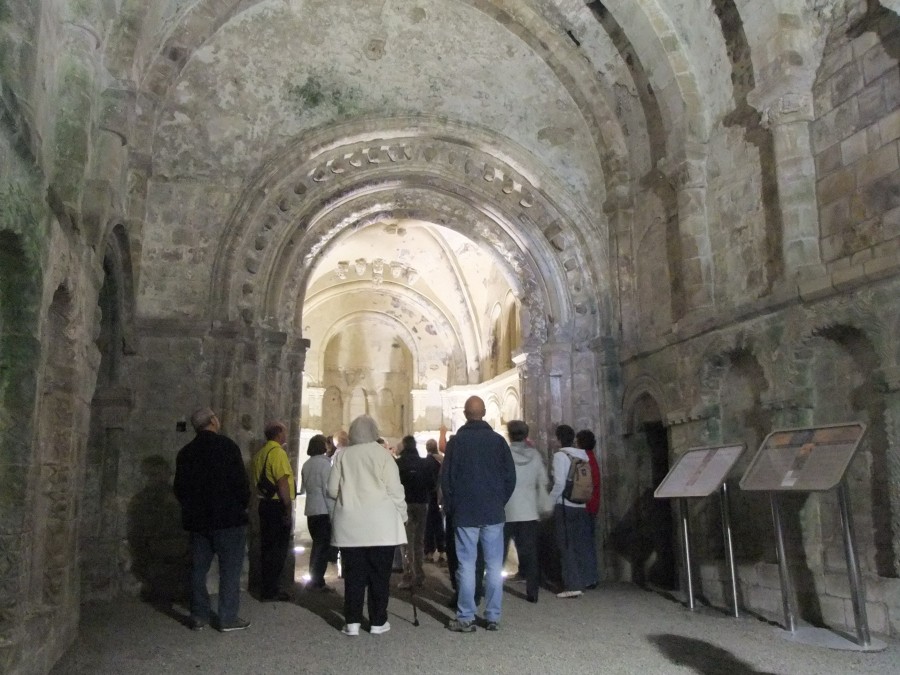
Kieran’s Historical Walking Tours, National Heritage Week, 2016
Many thanks to the 500 participants (and several repeat participants) who came out for my 7 historical walks for National Heritage Week 2016
Cork City Hall Tour

Eighteeenth Century Cork:
St Patrick’s Hill – McCurtain Street, The Victorian Quarter
Docklands:
Workhouse at old Cork Union Workhouse at St Finbarr’s Hospital:

Friar’s Walk Quarter:
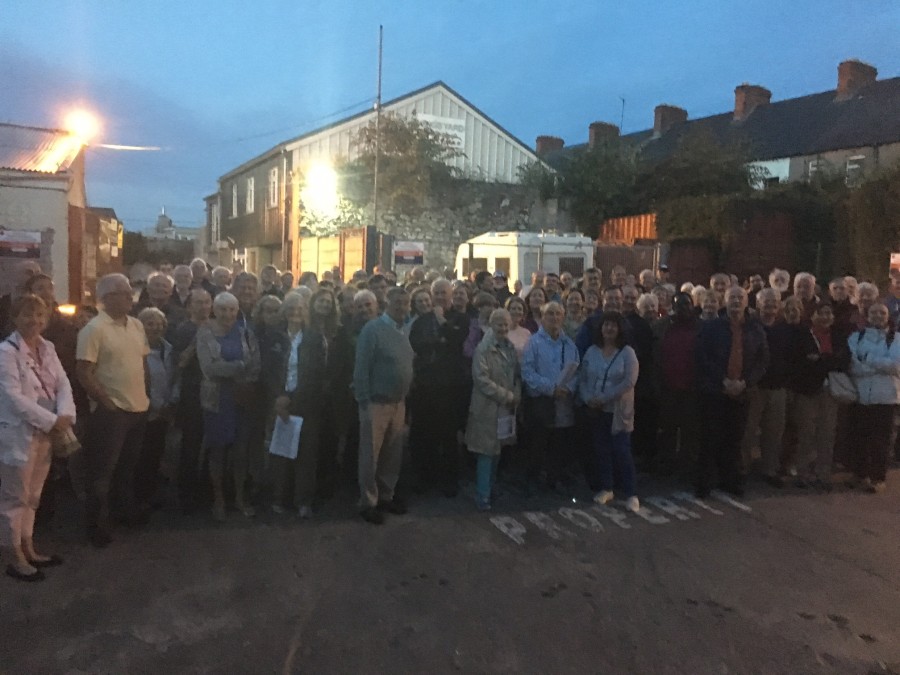
Fitzgerald’s Park:
Kieran’s Our City, Our Town, 12 May 2016
Kieran’s Our City, Our Town Article,
Cork Independent, 12 May 2016
Remembering 1916, The International Mood
Throughout 1916, pages and pages of writing and pictures are given throughout Irish newspapers to the tragedies of World War I. There are local Cork people shown in family photographs bound for the war. There are provocative death-ridden pictures of the front lines complete with descriptions of desolation and in depth geographical detail of hills, valleys and rivers spanning from France to Denmark. Views of the trenches, thousands of miles of scarred landscapes, blown up cities, collapsed road networks, burnt out homes, death at every corner – such images echo throughout the newspapers of 1916 and beyond, and stay in the mind long after you have read about them – the trenches are almost metaphors for the entrenched European society of the day – the allies and enemy not backing down – who will conquer? “Any day now it will end” – such remarks in editorials continuously work into the consciousness of the reader.
The political chessboard is active throughout the year with different perspectives and holding onto power. Physically European culture grasped Cork Harbour and the Irish channel as they became part of the battlefields of the seas and the fight for the Atlantic and North Sea. The torpedoed Lusitania of 1915 and the scuttled ship the Aud of 1916 haunted such maritime spaces – the presence of the other, the unknown enemy – in a submarine – waiting to take its chance and maim, sitting there on the ocean bed.
The daily published lists of deaths and the honours bestowed on participants glorify and construct a raison d’être for being on the front line. The naming of dead Corkmen and the families they left behind – the quests by the soul of city to be part of it – whether it was through the thousands of tons of Lambkins tobacco sent to the front line, to the picture shows of the war in the Palace Theatre and Cork Opera House – or even the regular flag days in support of the Red Cross and the Royal Munster Fusiliers (approx. 48 officers and over a 1,000 men). Then there were the conversations throughout the year about attaining a munitions factory for Cork – the empty shells almost standing in as metaphors for the empty promises of waiting for it – to provide jobs for those who did not go to fight on the masculine territory of the front line. The role of equality amongst the sexes features prominently – the men who went off to fight in the war versus the women in Cork who have stayed to put weaponry together, fundraise, volunteer at the Red Cross, engage in the quest for women’s votes, and in campaigning for women’s places as junior doctors in Cork hospitals – these are also discussion points as the year progresses.
On 18 May 1916, the Cork Examiner ran the story of the German placards placed on the front questioning the Irish holding the line in light of the 1916 rising. Private Dave O’Mahony, Macroom, attached to the Signal Corps of the Royal Munster Fusiliers, which formed part of the Irish Brigade, arrived home on leave from the trenches. Of the fighting generally, he noted it is of the “tricky kind, confined almost entirely to explosives. There is no open fighting, and that does not at all suit the men of the Munsters, who often long for an open hand-to-hand fight with the Germans”. Gas was the one death-dealing element they dreaded most. Just about Easter 1916, the gas attacks, which had ceased for a period of six months, were re-initiated by the Germans. The result of the attacks were disastrous; “It seems to me,” said Private O’Mahony, “that the Dublins and Inniskillings must have been caught unawares, because rats and mice, which are very prevalent, were to be seen turned up-side down, some of them quivering in their death agony”. When the wind is from a certain point all the men donned their masks, and at the first warning they pulled them over their faces to keep out the deadly fumes.
Private O’Mahony heard of the Dublin 1916 and deemed it a great shock to himself and his fellow comrades on the front. Things were unpleasant enough with the high casualty level around them. On one of those days the Germans placed out two boards on their parapet. One bore the news of General Townshend’s capture at Kut, with 30,000 men. Another had this query: ‘Irishmen, why will you fight for England while they are shooting your wives and sisters in Dublin’. Captain Larry Roche made up his mind that the ‘G’ Company should bring in these boards. He sent out some of his men, but the danger was too great, and they had to abandon their task. “Still there were men amongst the Munsters brave enough to take any risk, and who did the trick too. Lieutenant Biggane of Cork City and Corporal Kemp wrapped themselves in sheets of suitable hue, and crawling over the intervening space, with death hanging over them, they reached the enemy parapet and bore away, one each, the annoying placards”.
Captions:
843a. Model of World War 1 trench at Ypres World War 1 museum (picture: Kieran McCarthy)
843b. Former site of St Peter’s Market, Cornmarket Street; in 1916 it became a munitions factory (picture: Kieran McCarthy)
Kieran’s Our City, Our Town, 5 May 2016
Kieran’s Our City, Our Town Article,
Cork Independent, 5 May 2016
Remembering the Executions, 1916
In the historic week that we have, it appropriate to remember the execution of the 16 people involved in the 1916 Rising. The Cork Examiner on Monday 1 May ran an article on the official surrender by Pádraig Pearse on the previous Saturday night. The short snippet read: “In order to prevent the further slaughter of unarmed people and in the hope of saving the lives of our followers, now surrounded and hopelessly outnumbered, the members of the Provisional Government present at Headquarters have agrees to an unconditional surrender, and the commanders of all units of the Republican Forces will order their followers to lay down their arms”. It was signed P H Pearse, dated 29th day of April, 1916.
General Maxwell declared martial law and gave the order to execute the 16. On 7 May, the newspaper detailed that Commandant Pearse had been shot dead on 3 May; “Patrick H Pearse, Commandant General of the Army of the Irish Republic, and President of the Provisional Government, was 36 years old. A member of the Irish Bar, and the Headmaster of St Enda’s School for Boys at Rathfarnham, Co. Dublin. He was born in Dublin, but was of English descent. After sentence of court-martial he was shot”.
On 8 May the Cork Examiner described in an editorial on the death toll of the Rising that although no official figures have been issued by the authorities; “it is known that the number of deaths of civilians caused in the recent revolt is considerable. Already no fewer than 160 have been accounted for, but the list which has been complied is by no means complete, as many dead bodies were not recognised in any of the places open to public inspection”. The 160 bodies they mentioned were made up of 112 male, 20 females, and 28 unidentified. During the previous few days many bodies had been buried in the Glasnevin cemetery. The previous day to the editorial no fewer than 60 being interred there during yesterday. In Mount Jerome there were also buried 25 civilians, 2 officers, 3 privates and a member of the Veterans Corps. Certificates of death from shot wounds were issued in respect of 150 cases. Owing to the shortage of labour the bodies have in many cases been interred coffinless, in their clothes, in sheets and in blankets.
In an editorial on 10 May, the editor argued for a ceasing to the executions; “Everything now is quiet throughout the country, and the stillness of death apparently hangs over our much-tried capital. Is it not time, therefore, that the putting into effect of the extreme penalty should cease, and that some effort was made in the future that the accused should be tried under circumstances which would provide that some idea of the accusations and the gravity of charges of those involved should be judged by the public? It is very widely believed that on a very small circle indeed the responsibility for this terrible occurrence rests.”
At a meeting of Cork Harbour Board: Mr D J Lucy presided. The chairman said that the previous week the board passed a resolution denouncing the late rising in Dublin; Speaking Mr Lucy said; “that as a sequel to their first resolution, and in keeping with their duty, they should yield to the side of clemency and Christian charity, and ask the Government to cease any further executions as sufficient had been done to expiate the offences of these foolish leaders in Dublin. The universal cry at the present, not only in Ireland, but in England, was that there should be an immediate cessation of the death penalty. He pointed out that such a course would not alone affect any bitterness that may remain, but may be entailed in the future. It would be in the interests of England to stop them for she had to look to the feelings of their kith and kin fighting England’s battle on the fields of France and elsewhere, and also the feelings of an important section of the population in America, who were watching these events”. He proposed that the board send a message to the Prime Minister Mr Asquith asking him to use his clemency, and to stop any further executions as sufficient has been done to atone for what had occurred.
The Assistant Bishop of Cork, the Lord Mayor of Cork, the City High Sheriff, and Messrs John J. Horgan, solicitor; George Crosbie, BL, James J McCabe, LLD, members of UIL, Cork City Executive, sent to the Lord Lieutenant, Mr Asquith, the Prime Minister, and Mr John E Redmond, MP, a telegram which declared that, voicing the opinion of the great majority of the citizens of Cork, they protested strongly against any further shootings as the result of court-martial trials, and against indiscriminate arrests throughout the country – that “Such shootings and arrests are having a most injurious effect on the feelings of the Irish people, and if persisted in may be extremely prejudicial to the peace and future harmony of Ireland, and seriously imperil the future friendly relations between Ireland and England”.
Captions:
842a. Pádraig Pearse (source: Cork City Library)
842b. Proclamation banner on display at this year’s Cork St Patrick’s Day Parade, 2016 (picture: Kieran McCarthy)
Kieran’s Our City, Our Town, 28 April 2016
Kieran’s Our City, Our Town Article,
Cork Independent, 28 April 2016
Remembering the 1916 Rising
This week marks the actual centenary of the 1916 Rising. It is most apt to note that across the country 100 years ago, thousands of Irish volunteers waited for the order to come to Dublin to take the Capital. By 1916 the national figure for volunteer membership had risen to 15,000. The 1,600- strong rebel force in Easter week contained 1,300 Volunteers and over 200 from the Irish Citizen Army; this amalgamated battalion was designated by the insurrectionary leaders as ‘the Army of the Irish Republic’.
Journalist Niall Murray in his research remarks that on St Patrick’s Day, 1916, thousands of men and boys in uniform — almost half of them carrying arms — took to the streets of cities and towns to demonstrate the growing membership. From almost 40 county inspectors (Cork, Galway, Tipperary and others were split into two Ridings), reports compiled in RIC headquarters put the numbers who turned out at just over 4,500 outside Dublin city. When 1,400 who paraded there — from among the capital’s estimated 2,225 Irish Volunteers — were added, it was seen that a total 5,955 members of the organisation had shown up at nearly 40 events in 19 counties.
Tomás MacCurtain was the Brigade Commander of the Irish Volunteers in Cork city and county in 1916 and he had organised volunteers to march to Kerry to collect guns from the German ship, the Aud which was to land the weapons at Fenit. Their head-quarters was at the Volunteer Hall on Sheares Street, upon which a new memorial was unveiled by Cork City Council in recent weeks.
Research by Dan Breen of Cork City Museum is now shown in newly erected historical panels on walls opposite the Volunteer Hall. In February 1915 the leadership of the Cork Brigade of Irish Volunteers signed a lease on a large building at Sheares Street for use as a headquarters. Unlike their old headquarters on Fisher Street, the building had a sufficient number of rooms to allow concurrent activities such as arms drill, map reading and first aid classes to take place on days when training was conducted on the premises.
On Easter Sunday morning, 23 April 1916, 163 Volunteers from the Cork City Battalion, together with others from Cobh and Dungourney, paraded under arms outside of the Volunteer Hall prepared to take part in the manoeuvres that were a cover for the Rising planned to establish an independent Irish Republic. After an address by Brigade Commandant, Tomás MacCurtain, they marched off to Capwell Railway Station to board a train for Crookstown. However, just as they were departing, an order arrived from Dublin cancelling the operation. This was the latest in a series of conflicting orders that had been received by MacCurtain during the past week.
That day just over members of the Cork Brigade mobilised and assembled at eight designated concentration camps throughout the county. But, when he received the latest order, MacCurtain felt he had no choice but to stand his men down and order them to return home. When Tomás MacCurtain returned to the Volunteer Hall on Easter Monday evening he learned that the rising had commenced in Dublin. As his men had dispersed and the element of surprise had been lost, he decided that it was too late to join the fighting and that his best course of action would be to defend the Volunteers against the British Army. Negotiations between both parties mediated by the Lord Mayor of Cork, Cllr Thomas C Butterfield and Bishop Cohalan eventually led to a peaceful settlement. The deal involved the Irish Volunteers agreeing to hand over their guns on the understanding they would be returned at a later date in return for being allowed to return home but MacCurtain was arrested and detained in Frongoch internment camp in Wales along with those who fought in Dublin. Shortly after his return to Cork he was elected Lord Mayor in January 1920 and at the same time continued to hold the rank of brigade commander of the IRA. On his 36th birthday, 20 March 1920 MacCurtain was shot dead by the Royal Irish Constabulary in front of his wife and son at their home in Blackpool, which was then ransacked.
All the above historical elements are explored at the Military Museum, Collins Barracks, Cork City. The exhibition is entitled “Order, Counter-order and Disorder” – Cork in Easter 1916 (opening Monday to Thursday from 10am to 1pm and opening on Friday from 10am to 1pm and 2pm to 3pm). An exhibition on the 1916 rising is opening this week in Cork City Museum – it explores its connection to Cork City – illustrating people, places and events connected to Easter Week in Cork. In addition, check out in the historic St. Peter’s Church this year which is home to the “Rebellion!” exhibition curated by Rachel Abraham, which explores the people and organisations that went beyond the ideals of an Irish Republic and laid the foundations for its reality. It places the Rising in context by outlining the issues of the time, e.g. home rule and the outbreak of World War One. The exhibition shows why the effects of the Rising have been so far-reaching that we still remember those individual men and women today.
Captions:
841a. Crowds beneath the printed Proclamation during the recent Easter Monday Commemorations 2016 (picture: Kieran McCarthy)
841b. Photograph of officers of the Cork Brigade outside the office of the Freeman’s Journal in Dublin; back row: Daithí Cotter, Seán Murphy, Donal Barrett, Terence MacSwiney, Pat Trahey; front row: Tadgh Barry, Tomás MacCurtain & Pat Higgins (source: Cork City Museum)
841c. Cork Volunteer Hall, Sheares Street (source: Cork City Museum)
Kieran’s Talks, Lifelong Learning Festival Week 2016
For the forthcoming Lifelong Learning Festival Week, Douglas Road Cllr Kieran McCarthy will give a talk on some of the histories of West Cork through old postcards at the meeting room of the Church of the Real Presence, Curaheen on Wednesday 13 April, 10.30am. Based on his book, West Cork Through Time, Cllr McCarthy noted: “The talk focuses on in selective detail postcards from Cork City museum of the region of West Cork from one hundred years ago. It takes the reader from Bandon to Castletownbere through the changing landscapes and seascapes. This region is a striking section of Ireland’s coastline, over 320 kilometres in length, encompassing a raw coastal wilderness with expansive inlets eroded away by the Atlantic Ocean. The old postcards represent many memories of the landscape, sold to visitors and locals a century ago. There are places that charm, catch and challenge the eye. West Cork in itself is a way of life where individuals and communities have etched out their lives. It is a place of discovery, of inspiration, a place of peace and contemplation, and a place to find oneself in the world”.
Cllr McCarthy will also give a talk on Cork and daily life in 1916 in the Cork City and County Archives in Blackpool at 11am on Saturday 16 April (all free, all welcome). It will form part of the half day seminar entitled Cork and the Easter Rising. Kieran is currently working on a book that takes the year 1916 from the point of view that there were multiple conversations to be heard during the year – a kaleidoscope of ideas which provided the context and framework for revolution – everyday life being one – some led Cork citizens to connect with the Republican mantra at the time and others to just maintain existence, survive and struggle with the bleakness of a national and local economy. Cllr McCarthy noted: “Entering the Cork Examiner on 1 January and progressing page by page one discovers key nuggets about the nature of Cork society, the soul of Ireland’s southern capital, the ongoing conversations about maintaining a contemporary status of being one of Ireland‘s distinguished port cities, and all the advantages and problems that run with that”.
